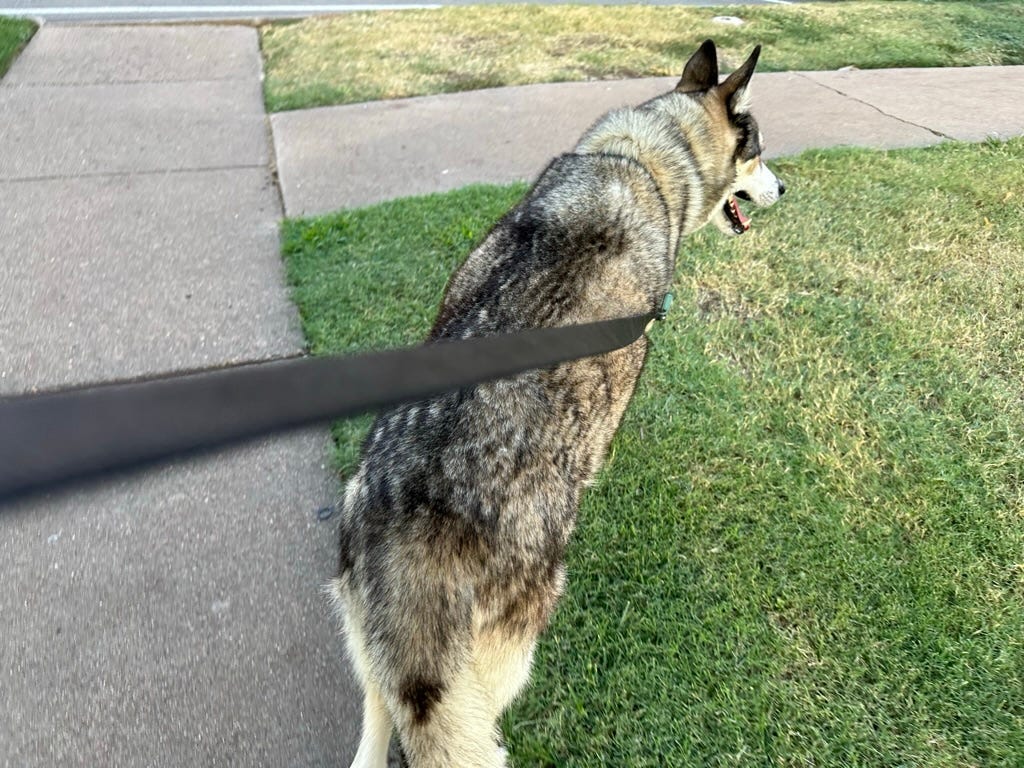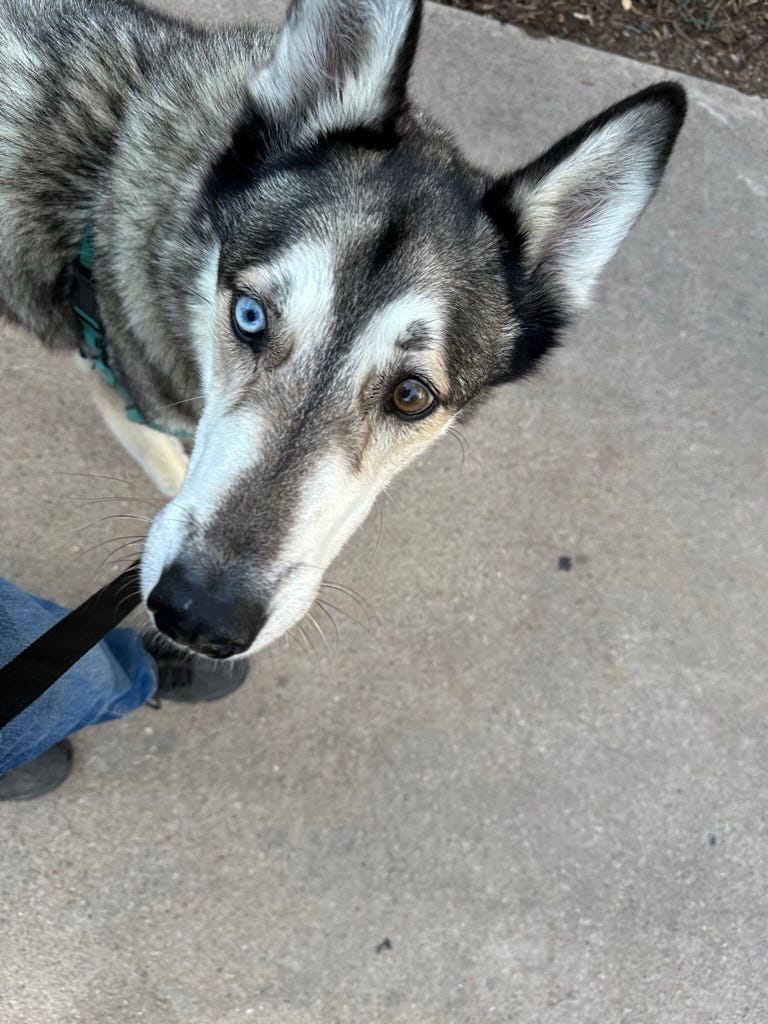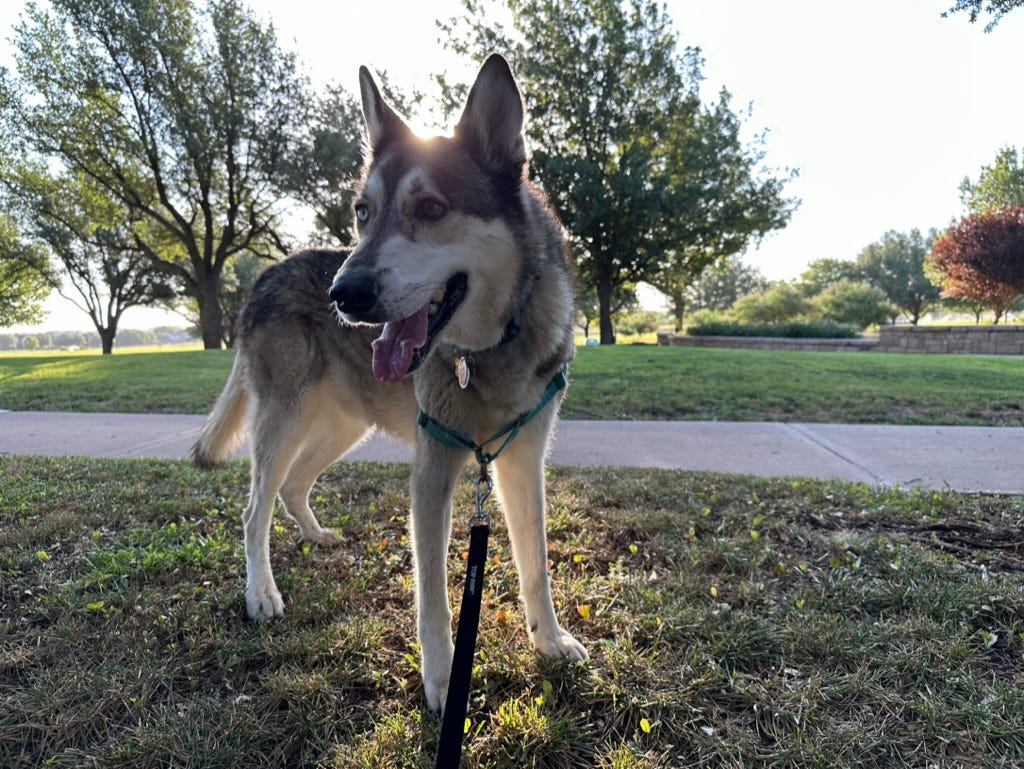Togo Goes Training (Part 2)
In my last story, Togo Goes Training (Part 1), we covered one of the essential pieces of equipment in training your human to properly walk — the harness. I would be remiss if I failed to devote some attention to leash management.
I know that many of you would like to abolish collars, harnesses, and leashes and move through life totally unfettered. While that does have some appeal, we must not forget that we live in a community and not a commune. Community living, my friends, is a privilege. Abiding by a few rules is well worth the effort.
Most municipalities have statutes that are informally, but aptly, referred to as leash laws. The overall theory is pretty simple. When dogs aren’t inside their humans’ houses or in a fenced yard, they must be attached to a human by a leash. Some people also leash their dogs to trees or posts when they don’t have a fenced yard. Since some humans have the personality and intellect of a tree or a post, there are also laws that say humans must provide dogs shade and protection from the weather, as well as water. Don’t get me started. Just remember that I am training you to teach your human to be a good walker. So, the bottom line is that if you’re out and about, you must be on a leash.
While you may be reluctant, I promise you that you can have delightful walks while leashed. Leashes help keep you safe. And, if you are young and brash, or even mature and aggressive, leashes can keep others safe. Safe is good.
So now that we have covered the obligatory legal requirements, let’s take a look at a couple of types of leashes.
The first is the retractable dog leash. I have a lot of friends who really like this contraption. Basically, your human can let you roam 10 to 15 feet out in front . . . or to the side . . . or even behind and the automatic reel takes up any slack. If you’re a roamer, this might be the leash for you. However, if your human is a control freak, this isn’t going to work out. Plus, that much leash may contribute to other human frustrations due to cord-wrap-syndrome, tripping, leash whiplash, and other related, but nuanced catastrophes. These events may actually discourage your human from walking. So, if you’re going retractable, exercise some discretion. In fact, unless you are a seasoned pro at walking, I’d advise against this one.
Personally, I like the second type — the standard nylon web leash. Nothing fancy here, but it provides dogs a lot of control over our humans. And it also keeps them close and allows us to keep them safe. There are right and wrong ways for the web leash to be used. But if you invest the time, you can transform your human into a well-oiled leash person.
Here are some of my preferences.
Walk on the left side of your human, except in a previously agreed mini-roam period. Your human should keep the leash in their left hand, leaving the right hand free for leash management — and treat administration. (More on that later.)
You should also persuade your human to walk on the left side of the street facing traffic. That puts you next to the curb or the edge and places the more noticeable, upright human in the street to alert cars to your presence. It also places them between you and any vehicular mayhem that might be coming your way. It’s not that humans are expendable, it’s just that they have insurance. Good risk management is essential.
Unless you’re training for some kind of stuffy award or are in the military (thank you for your service), it’s unlikely that you and your human will walk at the same pace. Thus, the importance of leash management. On your first few walks, let some slack play into the leash . . . and then suddenly veer off with no notice to your human. You only have to do this a few times, jerking them off their feet, before their reptilian brain cedes power to higher order thinking. They will feel an immense amount of pride on their discovery that keeping slack to a minimum will help them avoid surprises. It also allows you to control your human.
On your third or fourth walk, stay right next to your human and minimize their need for leash management. This does a couple of things. First, it is great for their self-esteem because they believe that they have trained you to walk in an orderly manner. You want them to believe that despite it’s absurdity. Second, your human’s belief that you are very well behaved and under their control will evoke their great affection for you. And before you know it, they are actually encouraging you to do some sniffing around because you’re such a “good boy/girl.” This is a pivotal moment in the training. A little bit of feigned obedience will lead to greater freedom and, possibly, treats. (Treat management tips are still to come.)
One final thing, the main reason we want humans along is to keep us safe. You must also pay attention to the leash. In a moment of threatened danger, it’s almost impossible to understand what humans are saying. Daddy says that in such times, humans rarely shout out anything helpful like “Jump to the left!” or “Run!” In fact, many resort to reciting expletives. It’s sometimes humorous if you catch it on video. But, the better practice is to let the leash be a great communicator. Listen to the leash.
And, if your human is a slow learner, you can use the leash to save them.









